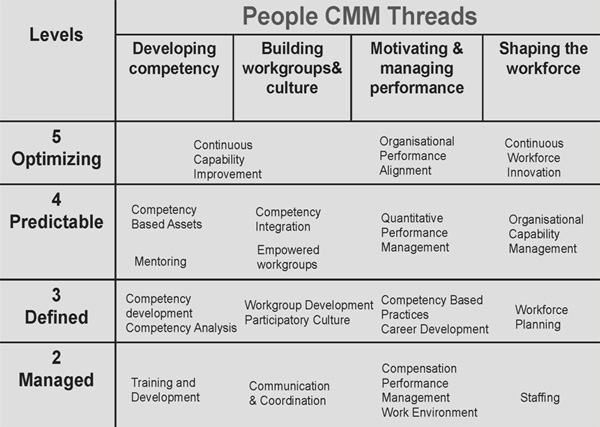People Capability Maturity Model (PCMM)
People Capability Maturity Model (PCMM) is a maturity framework that focuses on continuously improving the management and development of the human assets of a software or information systems organization. PCMM can be perceived as the application of the principles of Capability Maturity Model to human assets of a software organization. It describes an evolutionary improvement path from ad hoc, inconsistently performed practices, to a mature, disciplined, and continuously improving development of the knowledge, skills, and motivation of the workforce. Although the focus in People CMM is on software or information system organizations, the processes and practices are applicable for any organization that aims to improve the capability of its workforce.… Read the rest
